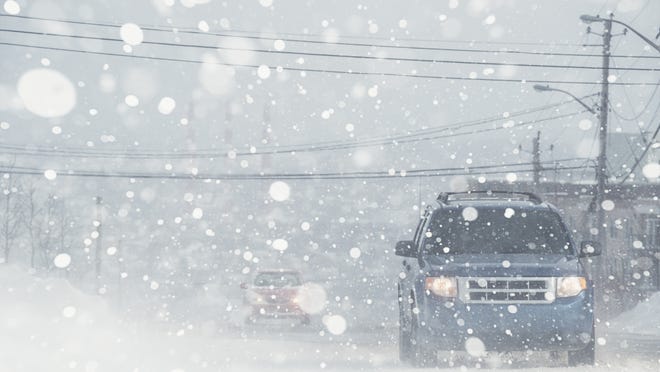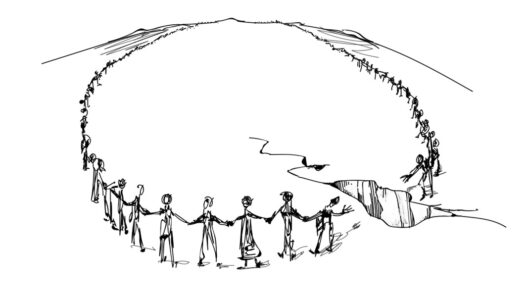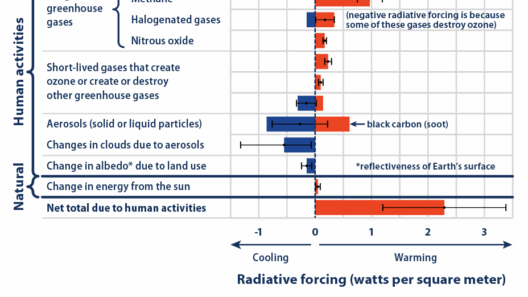As the planet gradually warms due to climate change, the juxtaposition of heavy snowfall amidst rising global temperatures raises intriguing questions. The phenomenon defies the intuitive connection between warmth and winter weather, prompting observers to inquire: how is it possible to experience copious amounts of snow in an era characterized by significant climatic shifts? To comprehend this paradoxical relationship, it is essential to unpack the dynamics at play in our warming world.
At the heart of the matter lies the concept of atmospheric dynamics. Warmer air possesses the capacity to hold more moisture, leading to an increase in the potential for precipitation. As temperatures rise, this enhanced moisture availability can contribute to the intensity and frequency of winter storms, ultimately resulting in heavier snowfall during colder months. Thus, the paradox emerges: a hotter world can yield harsher winter conditions as a consequence of the rising humidity within the atmosphere.
The link between temperature and precipitation is not merely a one-way street. Climate change influences both the supply and behavior of cold air masses. As polar regions warm at an alarming rate, the polar vortex—a large expanse of cold air that encircles the Arctic—can become destabilized. When this occurs, frigid Arctic air can plunge southward into traditionally temperate regions. This displacement triggers extreme cold snaps and can set the stage for monumental snowfalls. In essence, a warming world can create conditions that are conducive to severe winter weather, albeit in an increasingly volatile manner.
Moreover, the geography of our planet plays a significant role in weather patterns. Topography, ocean currents, and local climatic conditions are pivotal in shaping how and when snow falls. For instance, mountainous areas can enhance moisture convergence, resulting in orographic lift where moist air is forced to rise, cool, and condense into snow. In regions such as the Rockies or Sierra Nevada, warming temperatures do not eliminate snowfall; they transform the nature of it. The interplay of these geographical features and climate change propels unusual weather events that catch the attention of scientists and the public alike.
Exploring this conundrum further reveals underlying intricacies related to seasonal variability. The changing climate can alter the timing of snowfall, with some regions experiencing snow earlier or later in the year than in historical norms. The result is not just unusual winter weather but shifts in ecosystems and agricultural practices reliant on predictable seasonal patterns. For farmers, adapting to unexpected frost or snow in historically mild weather can pose significant challenges that test resilience and resource management strategies.
Additionally, the bizarre weather manifestations challenge our societal narratives about winter and summer. As extreme weather events proliferate, winters could become increasingly unpredictable and intense. The collective memories of snow-laden landscapes may be juxtaposed against the backdrop of ever-hotter summers, making our emotional relationship with these seasons more complex. The whimsical idea of a “White Christmas” may remain intact, yet its foundation could be precariously balanced on the fissures of climate change.
It is crucial to consider the broader implications of heavy snowfalls amid global warming. Such weather scenarios can strain infrastructure, disrupt transportation networks, and impose substantial economic costs. The occurrence of heavy snow in a warming climate necessitates adaptation strategies at local, regional, and national levels. Policymakers must prioritize resilience planning, mitigating the ramifications of these bizarre weather events to safeguard communities from the socioeconomic impacts they incur.
Moreover, public perception plays a critical role in discourse surrounding climate change. The existence of snow in a warming world can evoke skepticism about the realities of climate science among segments of the population. Individuals witnessing significant winter events may question the veracity of climate data, leading to confusion surrounding the nature of global warming itself. Thus, education and outreach become paramount. Communicating the multifaceted relationships between temperature rise, precipitation, and winter weather can clarify misconceptions and foster a collective understanding of climate change as an intricate and numerous challenge facing global societies.
Understanding the phenomenon of snow in a hotter world prompts a broader reflection on humanity’s relationship with the environment. Our actions, from fossil fuel combustion to deforestation, increasingly contribute to an unstable climate. Recognizing that heavy snowfalls can stem from a warmer planet should serve as an impetus for change, underscoring the need for immediate and concerted efforts to address the root causes of climate change. Actions to curb greenhouse gas emissions, transition to renewable energy sources, and promote sustainable practices are no longer optional; they are essential for mitigating future climate extremes.
In conclusion, the phenomena of snow in a hotter world exemplify the complexity of climate science. As bizarre winter weather becomes more commonplace in conjunction with global warming, it serves as a stark reminder of the interconnectedness of our climate systems. Heightened snowfall can occur amidst rising temperatures due to atmospheric dynamics, polar air displacement, and geographical influences. Understanding these relationships empowers individuals to engage critically with climate change and emphasizes the urgency of action needed to avert catastrophic futures. It is vital to work toward not only comprehending these impacts but also implementing solutions that foster environmental stewardship and safeguard our planet for generations to come.








